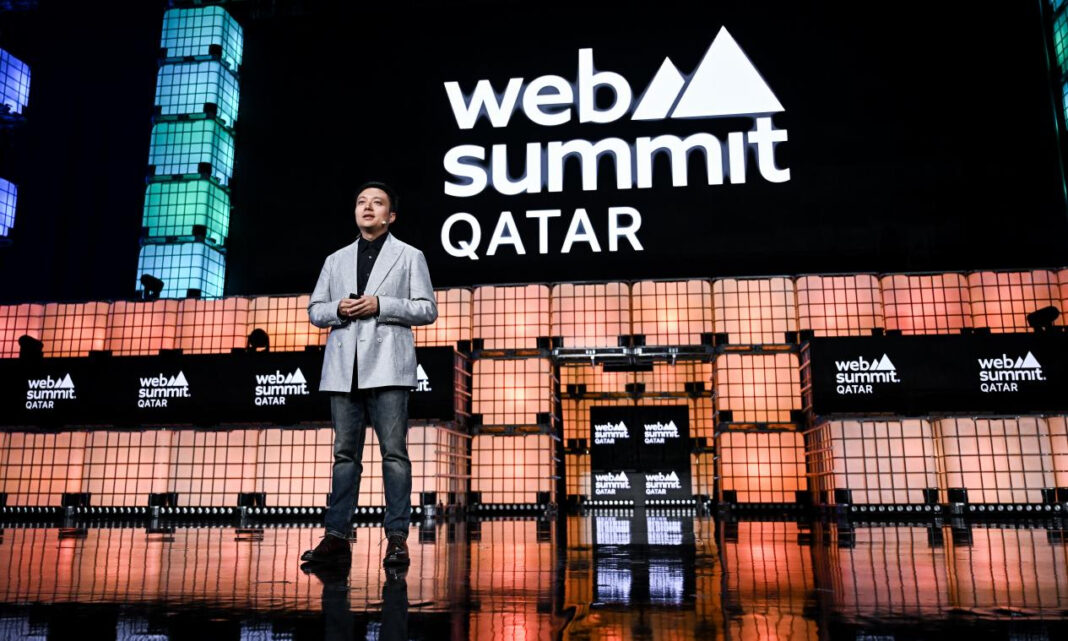Terminus Group CEO Victor AI shares his smart cities ‘SPACE’ vision as ‘urban evolution’ at the 2024 Web Summit in Doha Qatar.
According to Victor Al, The intricacies of urban evolution is founded on technological advancement through the ages to overcome the challenges of land, energy and scarcity of resources.
“Humans have utilized technology to transform their habitats from ancient times to modern society,” says Al, who posits that these challenges will continue to drive solutions which he frames as SPACE – Sustainable, Perceptible, Autonomous, Customized, and Energetic. Specifically;
Sustainable: Future cities will fully adopt renewable energy and comprehensively apply technologies such as carbon management and carbon sequestration to minimize the impact of urban operations on nature and ensure the long-term healthy development of human habitats.
Perceptible: Based on AIoT technology, smart devices deployed in various urban scenarios in future cities will have perceptual capabilities – people no longer need to work hard to adapt and integrate into the environment they live in, and the city will be able to perceive and adapt to people’s needs.
Autonomous: Through deep learning, future cities will be able to learn and know user habits, and offer autonomous services based on their timely reactions. When the city detects a user fainting or similar accidents, it will trigger an alarm and automatically call an ambulance, greatly improving emergency management efficiency.
Customized: With a multi-level innovative network architecture, future cities will be able to provide tailor-made, customized services for each user, instead of offering monotonous and standardized services. The marginalized needs of vulnerable groups will also be fully considered; and finally,
Energetic: Based on the four features and capabilities: sustainable, perceptible, autonomous, and customized, people will be able to embrace and enjoy a more energetic, innovative, and greener exciting lifestyle in future cities.
Al says that Terminus Group, as an AIoT solutions provider, has put the above SPACE concept into real implementation and has enabled smart industrial parks that integrated the SPACE capabilities in Middle East, Southeast Asia, Australia and China.
According to the Chinese Government, more than 500 smart cities are being built across China. One such project is AI CITY situated within the Chongqing Hi-Tech Industrial Development Zone in southwestern China.
According to Al, it serves as a pioneering area for building a model of an artificial intelligence city. The vision is to create a centre embedded with high-tech experiences, exhibitions, and tests for the future city.
The first phase of the master plan is called Cloud Valley, covering approximately 75,000 square metres. The project aims to harmoniously blend people, technology, and nature. It envisions spaces for human life, plant life, animal life, and even artificial life.
Al says that Cloud Valley uses sensors and wifi-connected devices to gather data on everything from weather and pollution to people’s eating habits to automatically meet residents’ needs.
“As sunlight hits the houses, bedroom windows adjust their opacity to allow the natural light to wake sleepy residents. Once the light has filled the room, an AI virtual housekeeper named Titan selects your breakfast, matches your outfit with the weather, and presents a full schedule of your day,” says Al.
According to a recent report by Allied Market Research, the global smart city market will grow from USD160 billion, in 2021, to USD708 billion by 2031, the result of a compound annual growth rate of 16.2%. Al claims that this rapid growth is testament to the fact that the concept of smart cities is not only gaining traction, but it has already become a dominant trend in urban planning and development in the first quarter of the 21st century.
Al argues that one of the main drivers of the growth of smart cities is the increasing adoption of IoT devices. IoT devices are connected devices that communicate with each other and exchange information, making them ideal for use in smart city applications. According to GSMA Intelligence, the number of connected consumer devices reached approximately 8.7 billion in 2022, with IoT devices accounting for the majority of these.
Another key driver of smart cities’ growth is the increasing demand for sustainable urban development. According to the United Nations, more than half of the world’s population currently lives in urban areas, and this is expected to rise to 68 percent by 2050. Rapid urbanization puts pressure on cities to provide basic services such as housing, transportation, water, and energy infrastructure. Al claims that smart cities may address these challenges by providing more efficient, sustainable, and cost-effective solutions.






